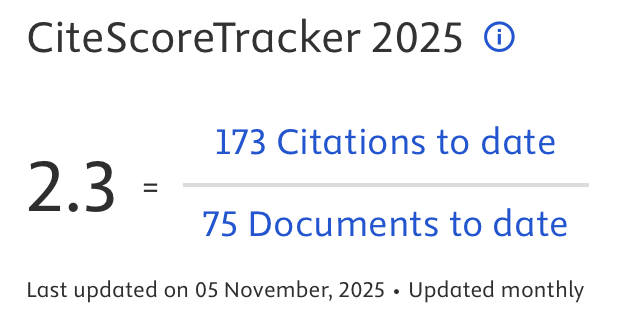AFORISME AL-QURAN DAN HERMENEUTIKA TERBUKA IBN AṬÂ’ ALLAH ATAS AYAT-AYAT KEHENDAK
DOI:
https://doi.org/10.14421/qh.2018.1902-01Keywords:
Ibn ‘Aṭâ‘ Allah, the opened hermeneutic, creative abstraction.Abstract
This essay tries to explicate how Ibn ‘Aṭâ‘ Allah understands Qur’an within his popular book, al-Ḥikâm. It is not merely his huge opus yet one of several books in which Indonesian Moslems like to learn and discuss. It covers the opened aphorisms stands on three entities, these are Qur’an, hadith, including some habits of Prophet Muhammad and subsequently I opt al-Ḥikâm. As a sample, I am such demanded to come in through his interpretation concerning “will” or kehendak. Ibn ‘Aṭâ‘ Allah, as far as I feel, has deep conception with regard to “will” which is wallowed with dilemma. Sometime, he puts it as something freely owned by human, sometime on the contrary. By that conception, Ibn ‘Aṭâ‘ Allah covets an ideal figure such “superman”—to borrow Nietzsche phrase—as if. A super human that prefer living within dark surrounding to comfort, that is able to reflect his hard problems often and then solve it well. This article thus interests to look further how Ibn ‘Aṭâ‘ Allah’s hermeneutic model, particularly when composing al-Ḥikâm. Who is his target audiences and how does it absorb to daily activities. The essay argues that Ibn ‘Aṭâ‘ Allah’s prescription in approaching Qur’an is going to a couple point, these are what I call as “creative abstraction” and an endeavor to reinvent Quranic mode or “reinvention of Quranic mode”.
Keywords: Ibn ‘Aṭâ‘ Allah, the opened hermeneutic, creative abstraction.
 Abstract viewed: 843 times
|
Abstract viewed: 843 times
|
 PDF downloaded = 798 times
PDF downloaded = 798 times
References
Ali, Abdullah Yusuf. The Holy Quran. Riyadl: the King fahd Holy Quran printing Complex. 1987.
Bannister, Andrew G. An Oral-Formulaic Study of the Qur’an. New York: Lexington Book. 2014.
Chittick, William C. Ibn al-Arabi’s Metaphysics of Imagination: the Sufi Path of Knowledge. Albany: State University of New York Press. 1989.
Corbin, Henry. Creative Imagination in the Sufism of Ibn Araby, terj. Ralph Manheim. N.J.: Princeton University Press. 1969.
Eco, Umberto. The Role of the Reader: Explorations in the Semiotics of Texts. Bloomington: Indiana University Press. 1984.
Haikal, Muhammad Abdul Maqsud (ed). al-Ḥikâm al-Ataiyyah li ibn Ataiyyah al-Sakandary Syarh Ibn ‘Abbad al-nafazi al-Rundi. Kairo: Markaz al-Ahram. 2002.
Hardiman, F. Budi. Seni Memahami: Hermeneutika dari Schleiermacher sampai Derrida. Yogyakarta: Kanisius. 2015.
Heidegger, Martin. Ontology: the Hermeneutics of Facticity, terj. John Van Buren. Bloomington: Indiana University Press. 1999.
Ibn Arabi. Syarh Musykilat al-Futuhat al-Makkiyah. Kairo: Dar al-Amin. 1999.
Ibn ‘Aṭâ‘ Allah. Sufi Aphorism: Kitab al-Ḥikâm. terj. Victor Danner. Leiden: Brill, 1984.
_______________. The Book of Aphorisms: Kitab al-Ḥikâm. terj. Muhammed Nafih Wafy. Selangor: Islamic Book Trust. 2010.
Latif , Amer. “Qur’anic Narrative and Sufi Hermeneutics: Rumi’s Interpretation of Pharouh’s Character”. Disertasi, Stony Brook University. 2009.
Monib, Mohammad dan Islah Bahrawi. Islam dan Hak Asasi dalam Pandangan Nurcholis Madjid. Jakarta: Gramedia, 2011.
Nasr, Seyyed Hossein. The Garden of Truth: the Vision and Promise of Sufism, Islam’s Mystical Tradition. New York: HarperOne. 2007.
Prabowo, Dhanu Priyo. Pengaruh Islam dalam Karya-Karya R. Ng. Ranggawarsita. Yogyakarta: Narasi. 2013.
Sahin, Abdul Sabur. “Kata Pengantar”, dalam Muhammad Abdul Maqsud Haikal (ed). al-Ḥikâm al-Ataiyyah li ibn Ataiyyah al-Sakandary Syarh Ibn ‘Abbad al-nafazi al-Rundi. Kairo: Markaz al-Ahram. 2002.
Schulzl, Dorothea E. “Mediating Authority: Media Technologies and the Generation of Charismatic Appeal in Southern Mali”. Culture and Religion. 16:2. 2015.
Simms, Karl. Paul Ricouer. New York: Routledge. 2003
Seung, T. K. Nietzsche's Epic of the Soul: Thus Spoke Zarathustra. New York: Lexington Books, 2005.
Syamsuddin, Sahiron. Hermeneutika dan Pengembangan Ulumul Quran. Yogyakarta: Pesantren Nawesea Press. 2017.
Wibowo, A. Setyo. Gaya Filsafat Nietzche. Yogyakarta: Galang Press. 2004.
Zamir, Syed Rizwan. “Tafsir al-Quran bi al-Quran: The Hermeneutics of Imitation and Adab in Ibn Arabi’s Interpretation of the Qur’an”, Islamic Studies, vol. 50. No. 1. 2011.
Downloads
Published
How to Cite
Issue
Section
License
Publishing your paper with Jurnal Studi Ilmu-ilmu al-Qur'an dan Hadis means that the author or authors retain the copyright in the paper. Jurnal Studi Ilmu-ilmu al-Qur'an dan Hadis uses license CC-BY-NC-ND or an equivalent license as the optimal license for the publication, distribution, use, and reuse of scholarly works. This license permits anyone to copy and redistribute the material in any medium or format and must give appropriate credit, provide a link to the license, and indicate if changes were made. If you remix, translate, transform or build upon the material you may use it for private use only and not for distribution. Jurnal Studi Ilmu-ilmu al-Qur'an dan Hadis granted an exclusive non-commercial reuse license by the author(s), but the author(s) are able to put the paper onto a website, distribute it to colleagues, give it to students, use it in your thesis, etc, so long as the use is not directed at a commercial advantage or toward private monetary gain. The author(s) can reuse the figures and tables and other information contained in their paper published by Jurnal Studi Ilmu-ilmu al-Qur'an dan Hadis in future papers or work without having to ask anyone for permission, provided that the figures, tables, or other information that is included in the new paper or work properly references the published paper as the source of the figures, tables or other information, and the new paper or work is not direct at a private monetary gain or commercial advantage.
Jurnal Studi Ilmu-ilmu al-Qur'an dan Hadis journal Open Acces articles are distrubuted under the Creative Commons Attribution-NonCommercial-NoDerivatives 4.0 International (CC BY-NC-ND 4.0). Article can be read, copy and redistribute the material ini any medium or format under the following conditions:
Attribution — You must give appropriate credit, provide a link to the license, and indicate if changes were made. You may do so in any reasonable manner, but not in any way that suggests the licensor endorses you or your use.
NonCommercial — You may not use the material for commercial purposes.
NoDerivatives — If you remix, transform, or build upon the material, you may not distribute the modified material.









